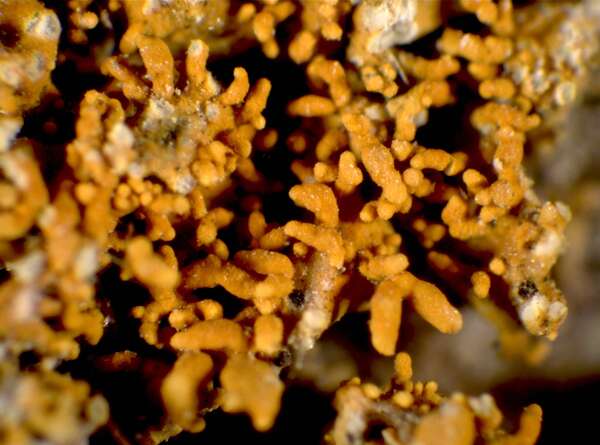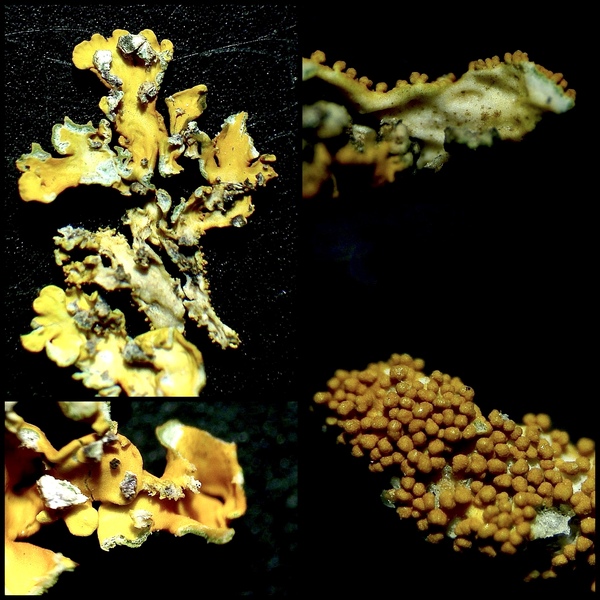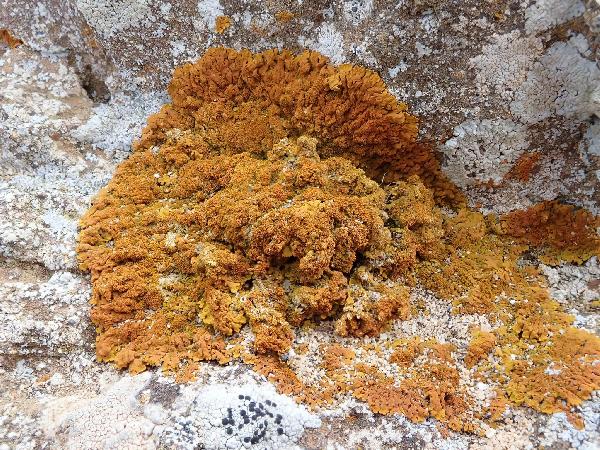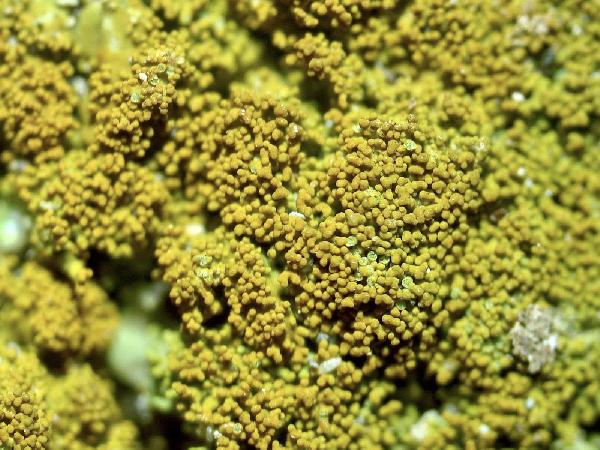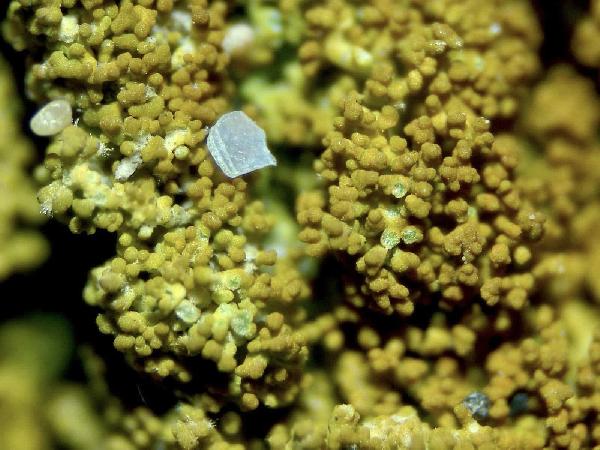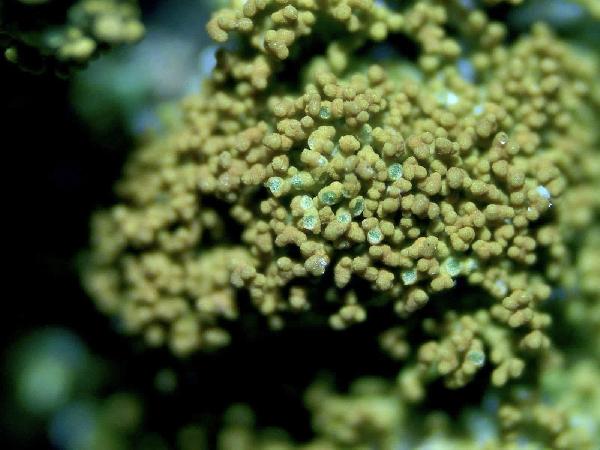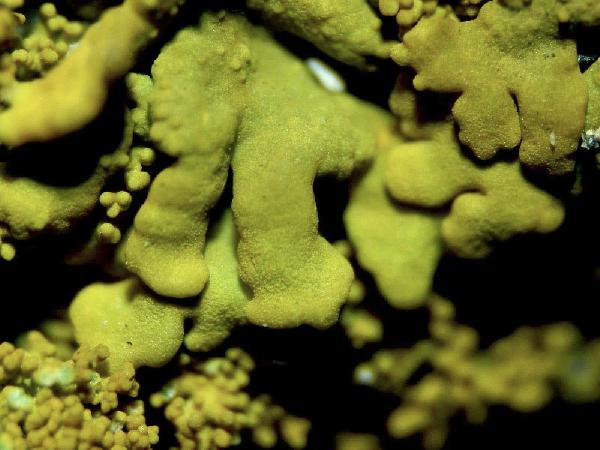Xanthoria stiligera Giralt, Nimis & Poelt
J. Hattori Bot. Lab., 74: 281, 1993.
Synonyms:
Distribution: S - Camp (Garofalo & al. 1999), Pugl.
Description: Thallus foliose, heteroemrous, dorsiventral, closely adpressed, orange to orange-red, forming regular to irregular, often confluent, 2(-3) cm wide rosettes. Lobes 0.5-1(-2) mm wide, mostly convex, but often flattened at the ends, with numerous, at first papilliform, later clavate to cylindrical, prostrate to erect, simple or sparingly branched, 0.05-0.08(-0.1) mm thick isidia; lower surface white or pale yellow, concave, folded, with numerous, mostly marginal, whitish hapters. Upper and lower cortices paraplectenchymatous; medulla white, rather loose, the hyphae 3-4 µm thick, often running parallel to the substrate. Apothecia rare, lecanorine/zeorine, to 2.5 mm across, strongly constricted at base, with a concave to flat, dark orange (usually darker than thallus) disc, and a thin, continuous, often isidiate and sometimes finally excluded thalline margin. Thalline exciple 100-200 µm wide laterally; proper exciple 70-80 µm wide; epithecium orange, K+ purple-red; hymenium colourless, 50-60 µm high; paraphyses c. 2 µm thick at base, the apical cells swollen, up to 5 µm wide; hypothecium colourless, up to 50 µm high. Asci 8-spored, clavate, functionally unitunicate, apically thickened with a broad internal beak, the inner part of apex and external cap I+ blue, Teloschistes-type. Ascospores mostly poorly developed, 2-celled, polarilocular, hyaline, broadly ellipsoid, 9-12 x (6-)7-9 µm, the equatorial thickening (“septum”) 6-7 µm. Pycnidia immersed into orange-red warts. Conidia ellipsoid, 2.5-3 x 1-1.2 µm. Photobiont chlorococcoid. Spot tests: thallus and apothecia K+ purple-red, C-, KC-, P-, UV+ intensely orange-red. Chemistry: thallus and apothecia with unidentified anthraquinones.Note: a strictly Mediterranean calcicolous species, ecologically similar to X. mediterranea, known from several stations throughout the southern part of the Mediterranean region, and from the Negev-desert; often confused with X. calcicola and X. mediterranea in the past.
Growth form: Foliose, broad lobed
Substrata: rocks
Photobiont: green algae other than Trentepohlia
Reproductive strategy: mainly asexual, by isidia, or isidia-like structures (e.g. schizidia)
Commonnes-rarity: (info)
Alpine belt: absent
Subalpine belt: absent
Oromediterranean belt: absent
Montane belt: absent
Submediterranean belt: absent
Padanian area: absent
Humid submediterranean belt: absent
Humid mediterranean belt: very rare
Dry mediterranean belt: very rare

Predictive model
Growth form: Foliose, broad lobed
Substrata: rocks
Photobiont: green algae other than Trentepohlia
Reproductive strategy: mainly asexual, by isidia, or isidia-like structures (e.g. schizidia)
Commonnes-rarity: (info)
Alpine belt: absent
Subalpine belt: absent
Oromediterranean belt: absent
Montane belt: absent
Submediterranean belt: absent
Padanian area: absent
Humid submediterranean belt: absent
Humid mediterranean belt: very rare
Dry mediterranean belt: very rare

Predictive model
 INDEX FUNGORUM
INDEX FUNGORUM
 GBIF
GBIF
